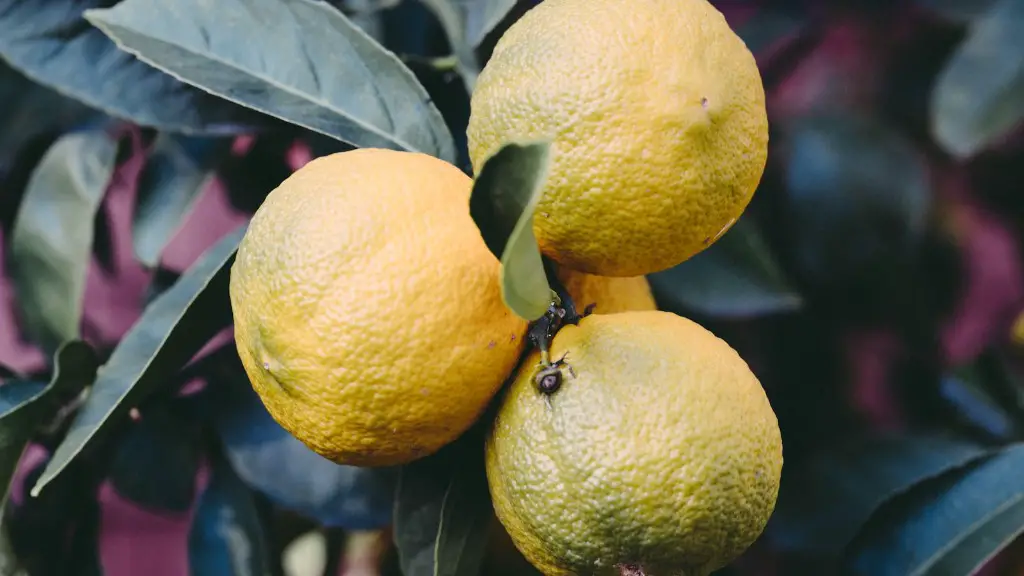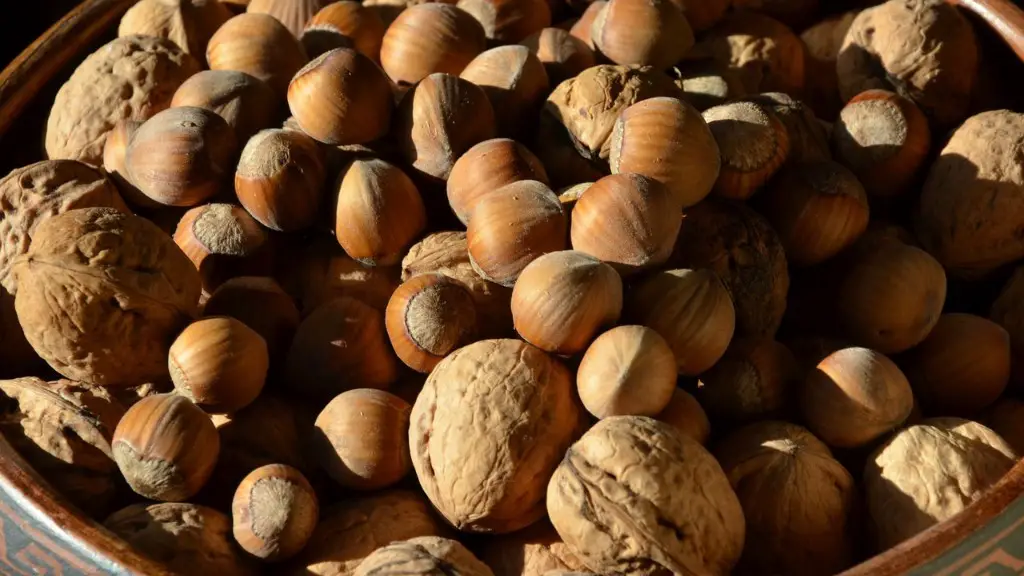Many people around the world are turning to palm trees to provide them with an easy and elegant way of decorating their properties. Whether they are planted in a yard, in a pot on a porch, or even in the interior of the home, these trees can give an attractive and tropical look. However, palm trees are not unaffected by environmental changes and can die if they are not given the right care.
If you notice that your palm tree is beginning to die, there are steps that you can take to provide it with the proper care and give it a chance of survival. First, you should assess the damage to determine the severity of the problem that the tree is facing. Are any of the fronds withered or dried up? Is the trunk discolored or covered in lesions? Are there any cavities or holes in the trunk? Investigating the damage is crucial to understanding the cause of the tree’s death and this will guide you in your choice of treatment.
A general sign of a dying palm tree is a frond with a dead central bud. If a bud appears to be dry or discolored, it is no longer able to absorb enough water and nutrients and, as such, it will die. Other signs of a dying palm tree include discoloration or lesions on the trunk, wilting or yellowing in the leaves and cavities in the trunk or rot along the edges. These are all tell-tale signs that the palm tree is not receiving enough of the necessary nutrients and this can be caused by several different factors.
The most common cause of a dying palm tree is due to a lack of sufficient water. Palm trees require a significant amount of water in order to grow and survive. If the tree is not watered frequently enough or with enough volume, then this could be the cause of its death. In order to remedy this issue, you should ensure that the palm tree is given enough water, especially during hot summer months.
Other causes of a dying palm tree can be more difficult to diagnose and can vary depending on the species and climate. For example, if your tree is facing disease and pest problems, then a fungicide or pesticide may need to be administered. Additionally, if the soil around the tree has been exhausted of its nutrients, then fertilizer may need to be applied in order to give the tree the extra boost of nutrition it needs. Consulting a professional arborist or garden specialist may also be necessary to identify the exact cause of the problem.
Furthermore, where a palm tree is dying as a result of too much baking in the sun, then it may be necessary to move it to an area with more shade. This can also be a great option if the cause of death is a lack of water. The tree will likely still be healthy enough to be moved if you take the necessary precautions. Be sure to dig a large enough hole and have a few people to help you with the task.
If your palm tree is already dead, then it is not safe for you to attempt to salvage it. It is almost impossible to bring a dead tree back to life and unless you are a trained arborist, it is best to get rid of it and start fresh with a new tree. Seek out a reliable landscaper or arborist to help you in the removal process as you should take all the necessary safety measures in order to avoid being harmed in the process.
Identifying Fertilizing Needs
Apart from ensuring enough water and shade, fertilizing is also an important factor in providing proper care for your palm tree. Fertilizing is particularly important if your soil is lacking the necessary nutrients or if the tree is displaying signs of malnourishment. You can choose from various types of slow-release fertilizer that are specifically designed for palms, or you could even opt for organic fertilizer such as cow manure.
It is important to note that not all palm trees require fertilizer, as some varieties are able to thrive without it. Furthermore, too much fertilizer can actually do more harm than good as it can cause stress and cause the palm tree to become too heavily top-heavy. Therefore, it is best to keep an eye on the health of your tree and, if needed, consult with an expert to determine what type of fertilizer is best suited for your palm tree.
Disease Prevention Measures
In addition to water and fertilizer, it is important to be able to recognize any signs of disease or pests in order to take the necessary steps to protect your palm tree. For example, if you notice any discoloration, brown spots or dryness on the fronds, this could be a sign of insect infestation. Similarly, if there are any blotches or ring-shaped lesions on the trunk of the tree, then this could be a sign of a fungal infection.
In order to prevent any possible infestations or infections from damaging your palm tree, it is important to inspect it regularly. Be sure to look out for any signs of disease or pests and take the necessary steps to protect the tree as soon as you notice something out of the ordinary. Additionally, if you have multiple palm trees in your yard, be sure to check them all and address any issues that you may find.
Regular Pruning Requirements
In order to keep your palm tree healthy, it is important to carry out regular pruning. This involves trimming away the dead foliage, fronds and roots to allow the tree to absorb more light, air and nutrients. While this may seem like a daunting task, it is important to note that it is not difficult to learn how to prune a palm tree, and many avid gardeners are able to do it themselves.
Additionally, pruning is also important when it comes to the aesthetics of the palm tree, as it can help you to keep the foliage looking neat and tidy. Pruning is also essential in helping the tree to retain its shape and structure, especially if you are planting the tree along a pathway or near other plants.
Soil Test and Appropriate amendment
It is also important to routinely check the soil around your palm tree in order to ensure that it is the right type of nursery soil containing the correct levels of organic matter and nutrients. In order to make sure that the soil has all of the essential elements it needs, it is best to carry out a soil test every couple of months. The soil should be tested for nitrogen, phosphorus, potassium, calcium and magnesium. If any of these are deficient in the soil, then you should apply the appropriate amendment in order to give your palm tree the nutrients it needs to survive.
In addition to making sure the soil is properly amended, you should also keep an eye on the pH levels of the soil in order to determine whether it is too acidic or too alkaline. If the soil is too acidic, then you can add dolomite or lime fertilizer, while if the pH levels are too high, then you should add fertilizers that are rich in phosphorous and sulfur.
Identifying Necessary Growing Conditions
In addition to providing the correct amount of water, fertilizer, shade and soil amendment, it is also essential to make sure that your palm tree has the appropriate growing conditions. This means making sure that the tree is planted in a place where it is able to get the right amount of sun and wind. Generally, palm trees should not be planted in locations where they are exposed to strong winds or too much direct sunlight, as this can be damaging to the tree.
Furthermore, it is important to make sure that the tree is planted in an area where it is able to have adequate drainage. If the tree is planted in an area where the water does not easily drain away, then this can lead to root rot and cause the tree to die. As such, it is important to make sure that the tree is given enough room for its roots to spread out and that there is a hole at the bottom of the planting area to allow for the drainage of the excess water.
Conclusion
In conclusion, taking the necessary steps to provide your palm tree with the correct care, nutrition and growing conditions can make a huge difference when it comes to avoiding death and ensuring the health of the tree. By keeping an eye on the tree, following the steps outlined above and consulting with a professional when necessary, you can keep your palm tree healthy and happy for years to come.



